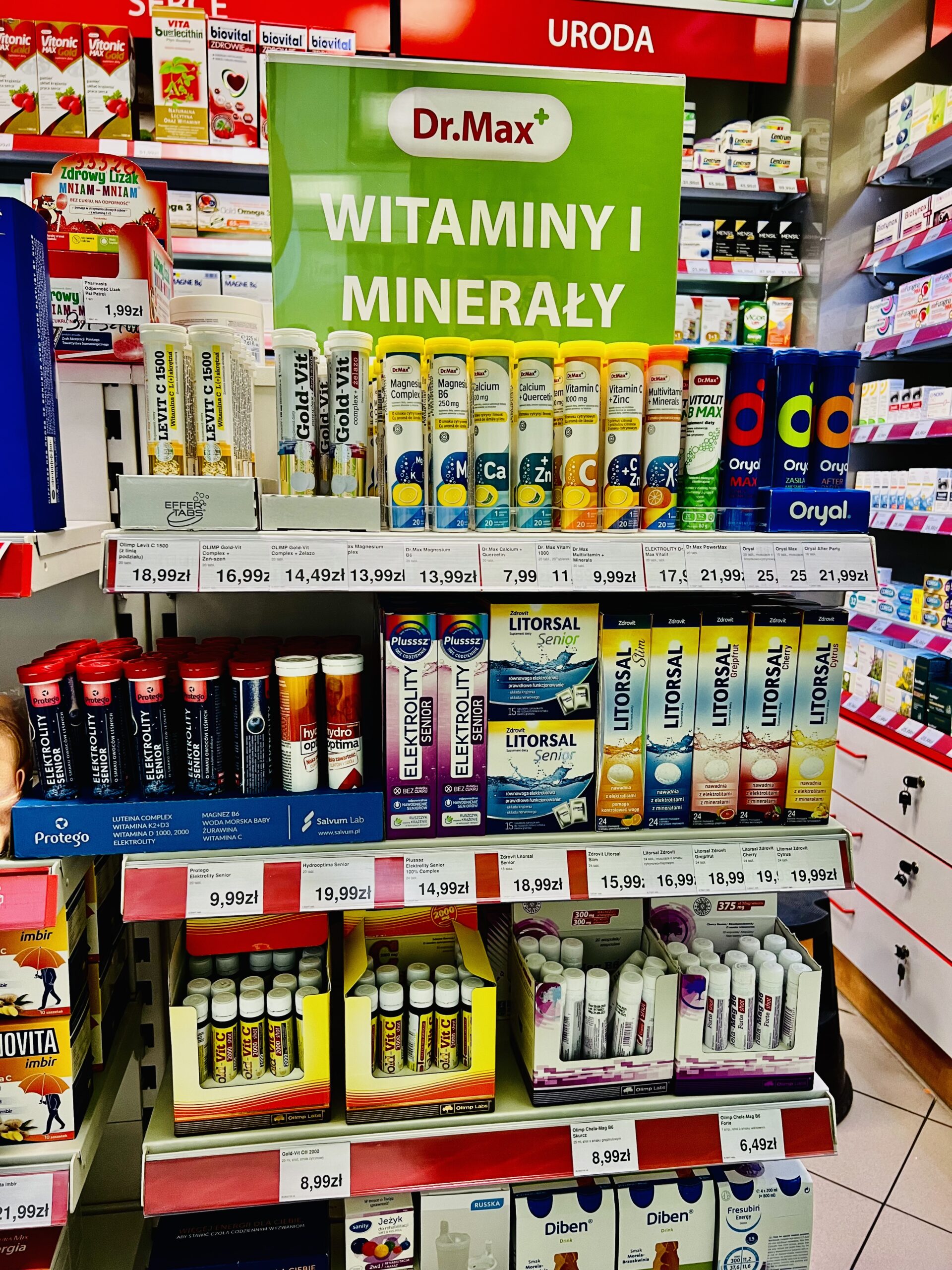The Polish dietary supplements market has experienced consistent growth over the years, with a market value of 6.8 billion PLN[1] in 2022, according to Statista. Additionally, 28% of women and 17% of men in Poland take supplements on a daily basis. Given this trend, there may be a viable niche for new brands in the market.
Per capita, the Poles spend on vitamins and minerals the same amount of money as people in France. Although purchasing power in these two countries is still not even close. Poland is the only market in the EU where the Over The Counter (OTC) market prevails over the market of prescribed drugs (54% vs. 46% in 2022).
Does it sound like a great opportunity for new OTC entrants?
It is, but this market is very tricky too. Why? There are a number of reasons for that.
First, most of the products consumed in Poland are positioned in low- and middle-price segments and produced locally. According to Trade Map data[2], in 2021, Poland imported supplements worth 194 million dollars, half of them from Germany and China. The rest is the product manufactured in the country.
The dietary supplements market is mostly occupied by local pharmaceutical giants (both vendors and wholesalers). For example, local pharma tycoon USP Zdrowie produces and distributes at least eight brands of different food supplements. Local pharmacy chains are important players too. Every chain has its own private label on the shelves, sometimes a few.
Namely, one of the pharma retail market leaders, the Czech company Dr. Max, offers more than 300 SKUs[3] of supplements and cosmetics under the Dr. Max trademark. A few interviews conducted in stores with pharmacists clearly demonstrate that Dr. Max’s personnel are motivated and inspired to sell these products. It’s a challenging task to compete with this assortment and staff’ motivation. A new brand should offer something unique, be positioned in the right segment, and be promoted accordingly. Local consumers are well educated and do pay attention to the novelties and product features.
Second, local legislation is quite strict and demanding. For example, all the packaging must be translated into Polish; stickers are not accepted. This means a new brand owner must organize co-packing in the country of origin or bring the product to Poland in bulk and find a co-packing site. The good news here is that the local registration procedure is relatively easy, especially for products produced and certified in the EU.
Third, a supplements producer Osavi[4] conducted their own market research in Poland and found out that 59% of Poles buy supplements in pharmacies and 28% in e-commerce. Other channels (drogeries, supermarkets, etc) play an insignificant role. There are more than 12.000 pharmacies in Poland, and these points of sale are very different from pharmacies one can observe in Western Europe. Polish pharmacies are much smaller: typically, there are 1-3 pharmacists working with the customers, and the shelf space is limited.
E-commerce is a significant and growing channel. However, Amazon isn’t successful in Poland. Local marketplace Allegro has more than 90% market share. This means that one must learn the Allegro algorithm to sell online in Poland. The biggest pharmacies are also the biggest e-commerce players (like Dr. Max), but the negotiation procedure is done separately (buyers for offline and online channels are completely separated).
Wholesale players are, on the one hand: a few huge and powerful pharma groups (for example, NEUCA, Pelion), and on the other hand: small niche distributors (sometimes highly skilled but hard to identify).
Finally, the owner of a new brand must keep in mind that local players expect both a generous margin and marketing support. It doesn’t make much sense to expect that local wholesalers will fully invest their own resources in new brands.
The Polish food suppliment market is nothing but unique. Although, because of local specifics and the language (one of the hardest in Europe), it is way easier to approach this market with local specialists.
[1] 1PLN = 0,22 EUR
[3] SKU – Stock Keeping Unit
[4] www.osavi.com





